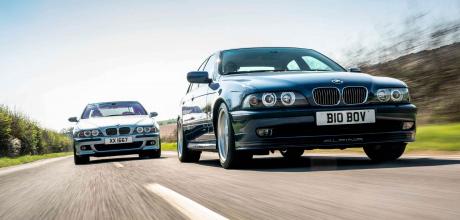1997 Alpina B10 V8 E39 vs. 1999 BMW M5 E39
BMW has bought out Alpina – so how might Alpina’s future products differ from BMW’s own M-cars? Comparing the fastest versions of the E39 5-series will give us some clues. Words Glen Waddington. Photography Barry Hayden.
Same difference ALPINA B10 & BMW M5
Brilliant V8-powered takes on a hot 5-series.Is in-house or indie tuning best?
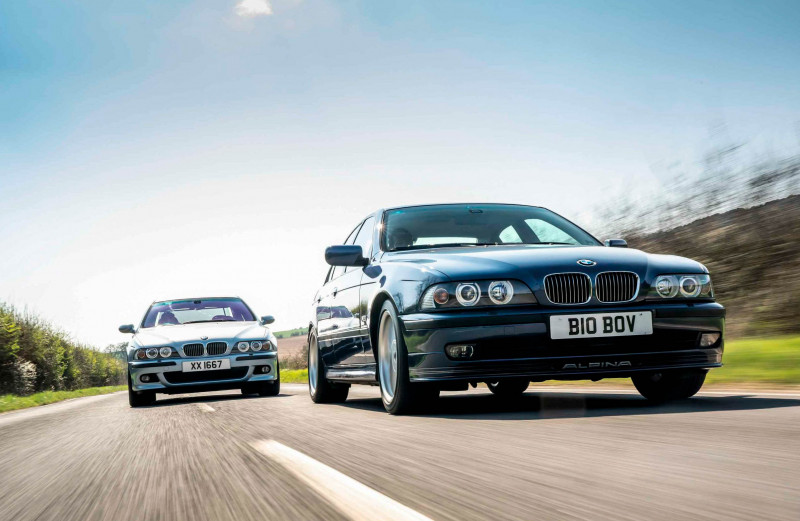
‘Of the two cars, the M5 is the more extrovert, but you don’t have to be a hooligan in it’
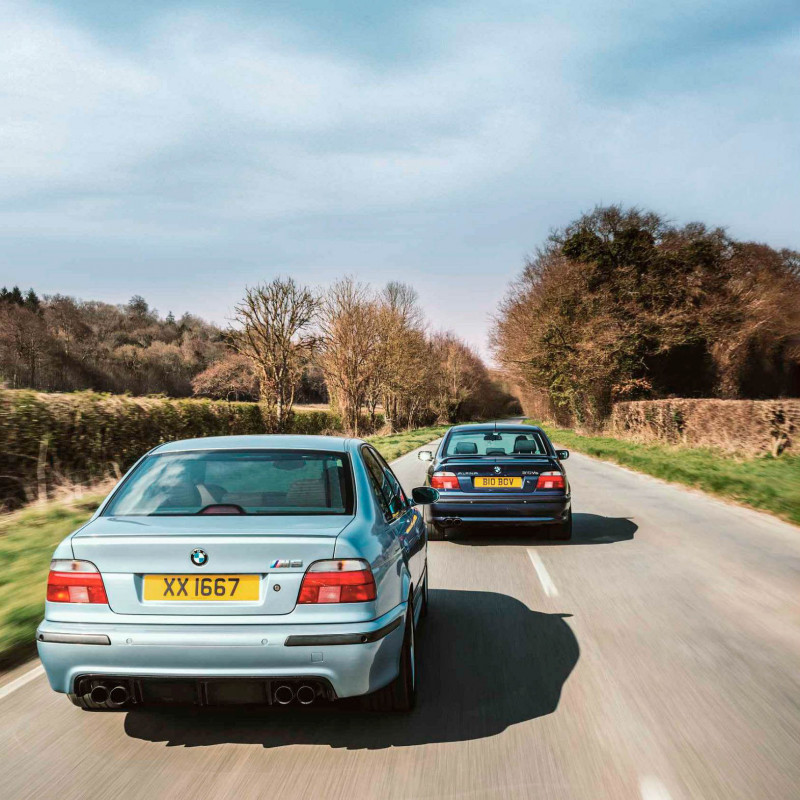
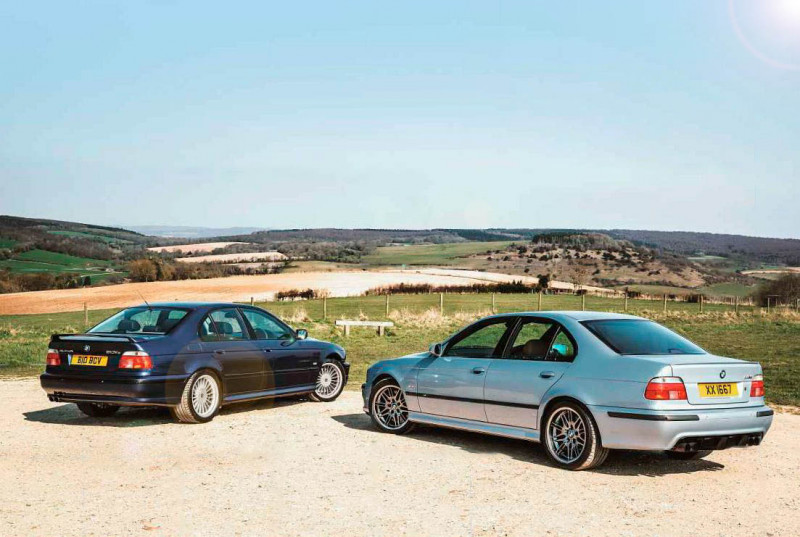
At the risk of descending into cliché, we Octane types have been locked-up for a while alongside a sizeable quadruped with a trunk. Big V8s are facing their last hurrah. Manufacturers have been down-sizing for some time and are now in a race to prepare for the switch to electrification. Sure, we can continue to burn hydrocarbons for now, and hopefully we Octane types will still be able to after this decade has drawn to a close, if perhaps to a more limited extent. But the move to battery EVs and increasingly tricky political hurdles and legislation are making life harder for niche manufacturers. Especially niche manufacturers of big, fast, V8-powered luxury saloons. And so ends the independence, after 57 years, of Alpina, which is being swallowed-up by BMW.
Obviously, Alpina relied on BMW for bodies, platforms, engines and transmissions, even if both the latter were fundamentally changed along with sufficient other hardware that Alpina could be declared a manufacturer in its own right. The two even competed, as here: the fastest, most desirable versions of the E39 5-series, in this case one tweaked, teased and transformed in-house by BMW’s M division, the other at Alpina’s Buchloe HQ.
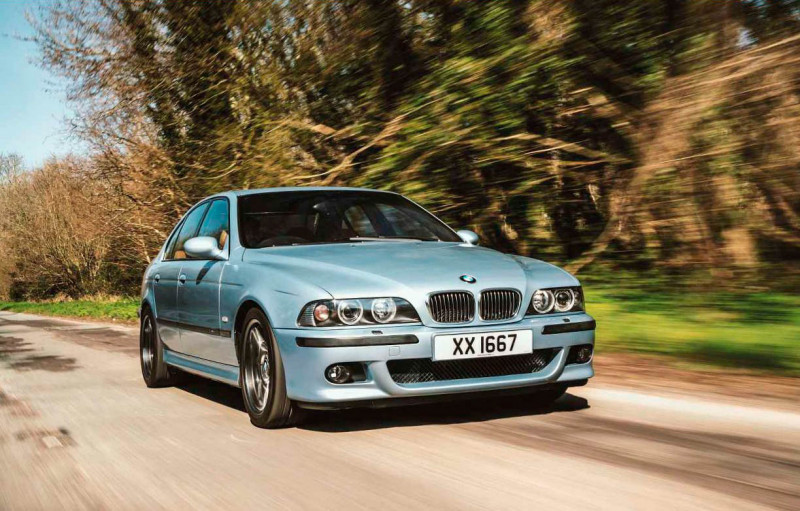
Here the similarities and differences between the two approaches to a big, fast, V8-powered luxury saloon are at their most acute. To examine and compare this particular pairing is to understand how Alpina might survive as a brand alongside M within the BMW empire. The whole story is worth a little recap. Alpina was a family business that made typewriters and foundered as it attempted a move into textiles during the 1960s. But Alpina Burkard Bovensiepen KG was established on 1 January 1965, three years after Burkard Bovensiepen himself had developed a twin-carb upgrade for the BMW 1500.

With eight employees in an outbuilding of the typewriter works, Bovensiepen expanded from carburettors to cylinder head and crankshaft upgrades, all with the blessing (not to mention the warranty backing) of BMW. By 1970, the company was 70-strong, had moved to its own site in Buchloe, and set up a racing team. Then, from tuning, tweaking and track activities, Alpina went on to develop its own versions of BMW cars and was declared a car manufacturer by the German Federal Ministry of Transport in 1983.
BMW’s own history, obviously, goes further back – but BMW M’s doesn’t. Founded as BMW Motorsport GmbH in 1972, M is celebrating its 50th anniversary this year. Its first project was the 3.0 CSL ‘Batmobile’ E9, an in-house racer that dominated the European Touring Car Championship, rather as Alpina had done a couple of years before. Then a call to Motorsport’s chief engineer Jochen Neerpasch in the-mid-1970s saw a couple of 5-series racers made for competition in South Africa and the creation of the 530MLE E12, just over 100 built for homologation and all sold there.
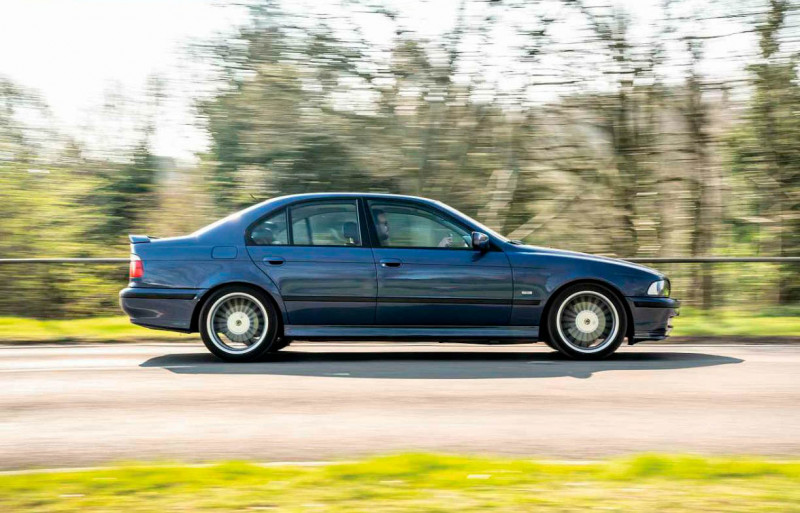
In 1978 the mid-engined M1 arrived, and the M535i E12 – a hand-built, high-performance roadgoing version of the E12 5-series. In 1984 came the M635CSi E24, which shared the E26 M1’s race-bred twin-cam six and was an avant-garde executive express. But perhaps M’s greatest legend is the E30 M3, a return to original M form in that it was developed purely to compete and dominated its racing class in the latter half of the 1980s. It now commands stratospheric prices as a road car; a proper homologation special and a real road-racer.
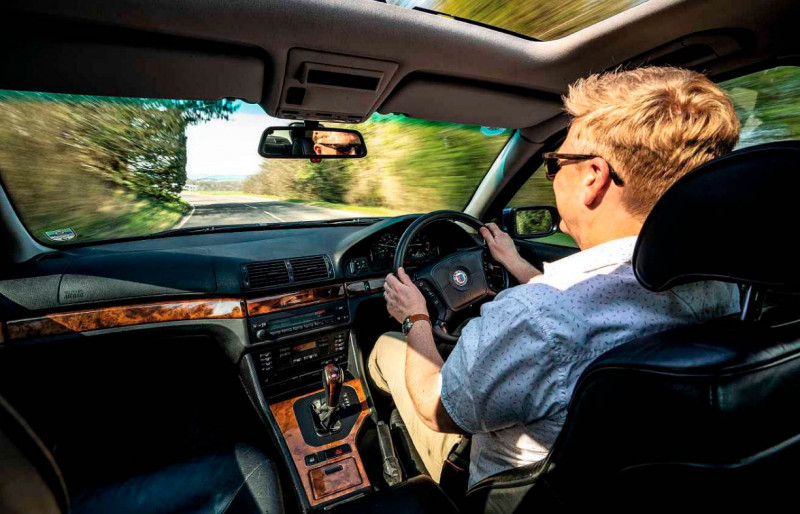
Most M products have been road cars with a high-performance edge wrought from years of motorsport experience. Witness the M5. We are now on the sixth generation, and the model first appeared as a road car, not a racer, in 1984, powered by the M1’s glorious twin-cam straight-six. The E39 here is the third generation, significant for a number of reasons: M’s first V8, a headline-grabbing power output of 400PS (394.5bhp for us non-metric Brits), and a move to series production alongside the regular 5ers that rolled off the line. Why? Demand. More than 20,000 found homes between 1998 and 2003, far more than M’s artisans could put together.
So, what if you wanted something brisker than the norm and a little more, er, exclusive, too? In fact, Alpina got there first: the E39 540i-based B10 V8 appeared in 1997, and during three iterations (defined by engine developments and the facelift imposed by BMW) production totalled 1497 – including 291 Touring versions, a bodystyle that was denied that generation of M5.
Tom Hillary’s car is from the first year of production. As with all B10s, it left BMW’s Dingolfing plant without the parts that make it an Alpina, and headed to Buchloe for finishing. Its engine is a 4.6-litre variant of the 540i’s ‘M62’ quad-cam, 32-valve 4.4 with aluminium block and single-row timing chain, though it isn’t a simple overbore as the Nikasil-coated cylinders meant that a new block had to be cast. This BMW did, to Alpina’s specification, in return for applying it subsequently in its own cars from 1998, as well as the Morgan Aero 8 and 2002 Range Rover.
Alpina refers to the engine in this car as the F3; an earlier-generation (F2) V8 first appeared in Alpina’s E34 5-series as the B10 4.6 in 1994, of which 46 were made. Stats are obviously important, and here we have 340bhp (metric) and 347lb ft, which compare with the 286bhp and 324lb ft of BMW’s own 540i. Other Alpina-specific changes include an upgraded crankshaft, more aggressive cams, hand-finished ports, lighter, higher-compression Mahle pistons, balanced, sintered con-rods, reprogrammed engine management and Alpina’s own bespoke exhaust system. Handling all this are Alpina’s suspension and brake modifications, with twin-tube Bilstein gas dampers, 19mm shorter Sachs springs and larger vented discs. Transmission is via a ZF 5HP five-speed automatic only, with Alpina’s own Switch-Tronic system that includes shift buttons on the back of the stitched leather steering wheel – long before such things had become commonplace.
It has to be said that, of every largish saloon car ever made, there has possibly never been a better basis than the E39 5-series. Introduced in 1995, it’s modern enough for great comfort and refinement yet old enough to be ‘analogue’ in character and somewhat over-engineered in the build quality department. It also features aluminium-intensive front suspension and a multi-link rear axle, as well as BMW’s famed fascination with near-50:50 weight distribution. The newly introduced rack-and-pinion steering of the six-cylinder versions, however, had to make way for the old recirculating ball system: not enough room under the bonnet with the V8 engines.
M’s take employed the S62 version of BMW’s V8, its first version with variable timing on both intake and exhaust camshafts, and stretched in capacity to 4941cc. Other highlights include dual-row timing chains, individual throttle bodies for all eight cylinders (electronically actuated and with a driver-selected ‘sport’ mode for quicker response), a raised compression ratio, hollow camshafts and a semi-dry oil sump, which consists of two additional scavenging pumps that activate during hard cornering. Peak power you know about; torque tops out at 369lb ft, and it revs all the way to 7000rpm.
All of that is transmitted to a rear-mounted limited-slip differential courtesy of the 540i’s Getrag six-speed manual gearbox; there’s a shorter final drive ratio and the clutch is beefed up. The steering ratio is also quicker, there are larger, floating-style, vented disc brakes, and the suspension is 23mm lower, with thicker anti-roll bars, firmer springs and specifically valved dampers, polyurethane auxiliary springs and steel balljoints.
And so they meet. We are close to Goodwood, amid the beautiful South Downs. Tom’s Alpina hoves into view first, the model of subtlety, from a distance only its simple raised tail spoiler marking it out from a regular 540i. But it has stance. And much larger wheels, the distinctive 20-spoke Alpina alloys that hide their inflation valve within the locking centre cap. Up close you spot the pinstriping about the front airdam. It’s optional elsewhere, but whoever bought this car new opted to keep things low-key.
Then we hear the M5. Subtlety be blown, this is one V8 that likes to make itself known. No popping or banging, and you certainly wouldn’t call it anti-social, but the sonorous blare of its exhaust is in stark contrast to the apparent silence of the approaching Alpina.
There’s a clue to the difference between the two approaches to a super-fast 5-series right there. Visually, too, more effort has gone into deliberate separation from other E39s: the door-mirrors are rounded race-style, rather than rectangular, and the front bumper is re-drawn, with circular inset spotlamps. The tiny lip-spoiler is barely present on the bootlid, but the faux splitter in the bumper below (and the quad tailpipes) are a more significant disruption. All very tasteful cues, no doubt, and certainly putting the sport into sports saloon. Nice wheels, too, multi-spoked with an anthracite finish. Owner Tahmid Haque steps out and smiles. He’s clearly enjoyed the drive over from Kent.
I take a look inside both cars. Many Alpinas feature blue-painted dials, but they’re absent from the first E39 B10s – the footwell carpet mats, however, are a fabulous bit of period stripiness, rather like the louder lining of a demure Paul Smith suit. Alpina’s comfort seats even feature an adjustable upper backrest, which can tilt back and forth; they are embracing and supportive yet also extremely, well, comfortable. Elsewhere the ambience is par-for-course late-1990s German exec: impeccable ergonomics, one of BMW’s best (and most characteristic) dashboards, lots of supple, stitched Lavalina leather, and chunks of wood scattered across dash and door panels.
Lots of leather in the M5, too, tan in this case, but a simple aluminium inlay to the dash, and a three-spoke steering wheel as well as a cutely ovoid rear-view mirror. And while the Alpina features those highly unusual shift-buttons on the steering wheel, the M5 is resolutely manual. A set of lights around the grey-faced rev-counter is there to count you up from a 4000rpm rev-limit as the oil warms through, which is pragmatic and playful in equal measure.
I’m more familiar with the M5, so that’s the wheel I take first – and feel instantly at home. I meant what I said about the dashboard, which is coming up for 30 years old yet still looks beautifully wrought and impeccably finished, and its layout is entirely logical. Maybe I’m just old-fashioned, but I feel more in control with dials rather than screens, and buttons rather than a joystick. I love a manual shift, too – though only in the right car. It’s fair to say that M’s brief is pure performance; Alpina has always combined speed with increased luxury.
Firing the V8 elicits a growl, noticeable yet welcome, cultured rather than raucous. And pulling away immediately puts a smile on your face, with instant torque from the bottom of the rev-counter and which continues all the way round, burgeoning seriously from around 5000rpm (those lights have gone out now) as the warbling note intensifies and properly pricks the nape of your neck.
Shifting gear is quick and satisfying, with a certain heft that feels appropriate yet never gets in the way. And the way in which the car deports itself along these sinuous country roads is deeply impressive: refined over coarse surfaces yet in touch rather than aloof, letting you know exactly what the tyres are doing.
What’s more, it’s superbly balanced, turning in adroitly, and, while it would be all too easy to swing the tail, there’s no need. Drive neatly and it helps keep you poised and pointed, rather than dominating with a showboat display of bravura. Of the two cars, the M5 is the more extrovert in character, but respectful decorum keeps things brisk without denying yourself some proper entertainment. You don’t have to be a hooligan in it.
And so to the Alpina. Messages here, while certainly not mixed, are whispered rather than shouted. It’s just as easy to settle into, and you feel cosseted rather than focused. There can be a ballsy V8 soundtrack yet it’s mostly muted; pulling away involves selecting Drive rather than manipulating gearlever and clutch; even the steering feels far lighter.
Once you’re moving along the road, you quickly detect that the ride is softer, smoother, still superbly damped and with far more of the magic carpet effect. Meanwhile, the transmission, which features five ratios, climbs quite quickly into each next gear, exploiting torque over power, keeping things quiet. Yet acceleration is still strong, almost seamless, rather like that of an electric car. You soon realise that you’re travelling more quickly than you might have expected.
Turn-in is softer than in the M5 though the balance is equally exquisite. There’s less feedback, yet the lack of visceral sensation feels appropriate rather than frustrating. Throttle response is also far less immediate, with no Sport button to chivvy things along. But that throttle is also very long in its travel, and every millimetre accesses more thrust. Push all the way and the transmission will kick-down, turning up the wick, winding in the horizon with ever-intensifying haste.
Or you can slide the transmission selector across to the left and play with the Switch- Tronic controls on the wheel. Oh my. Now we’re alive, that V8 suddenly finding its voice, the punch in acceleration above 4000rpm every bit as thrilling as the M5 offers. And despite the lower-geared steering and softer ride, you can maintain this rapid gait as the road twists and climbs across the landscape. It’s a class act.
Despite our location, you sense that the Alpina’s natural environment is a derestricted autobahn. There you want storming pace with utter calm, rather than histrionics, and that’s where the B10 delivers. Sure, it will play if you need it to, but that’s easier in the M5. There’s more sobriety in Alpina’s approach.
I’m not about to choose one over the other. That’s not my job today. There’s certainly more immediate gratification when it comes to driving the M5, but there could be more potential for long-term satisfaction with the Alpina: it can pamper in a way that’s beyond the M5, yet entertain to a similar degree. It’s also worth bearing in mind that this generation of B10 developed via four versions of the V8 (with 370bhp in long-stroke 4.8S form) as well as two straight-sixes and even a diesel, all of which made for great GT saloons, while the E39 M5 altered only slightly during its career. Whatever, these cars are proof that, rather than being a surprise move, you might wonder why BMW didn’t try to buy out Alpina long ago.
THANKS TO Tom Hillary and Tahmid Haque
TECHNICAL DATA FILE 1999 BMW M5 E39
- Engine 4941cc V8, DOHC per bank, 32-valve, Bosch fuel injection/management
- Max Power 395bhp @ 6600rpm
- Max Torque 369lb ft @ 3800rpm
- Transmission Six-speed manual, rear-wheel drive
- Steering Recirculating ball
- Suspension Front: MacPherson struts, coil springs, anti-roll bar. Rear: multi-link, coil springs, telescopic dampers Brakes Vented discs
- Weight 1858kg
- Top speed 155mph (electronically limited)
- 0-62mph 5.3sec
Clockwise, from right 5.0-litre V8 grabbed headlines with its supercarstyle output; re-sculpted front bumper/valance looks the part; dials, wheel, manual trans are the main features of this superbly wrought cabin.
Left and above Alpina has a loftier tail spoiler, while M5 features quad pipes and a lairylooking splitter; big wheels and lowered suspension give the Alpina stance, but you won’t hear it coming.
‘What if you wanted something brisker than the norm yet a little more exclusive than the M5?’
Clockwise, from below left Alpina’s own spec dictated that BMW cast a 4.6-litre version of its V8; only subtle Alpina modifications inside and out on this example.
TECHNICAL DATA FILE 1997 Alpina B10 V8 E39
- Engine 4619cc V8, DOHC per bank, 32-valve, Bosch fuel injection/ management
- Max Power 335bhp @ 5700rpm
- Max Torque 347lb ft @ 3800rpm
- Transmission Five-speed automatic ZF 5HP, rear-wheel drive
- Steering Recirculating ball
- Suspension Front: MacPherson struts, coil springs, anti-roll bar.
- Rear: multi-link, coil springs, telescopic dampers
- Brakes Vented discs
- Weight 1727kg
- Top speed 175mph
- 0-62mph 5.9sec


